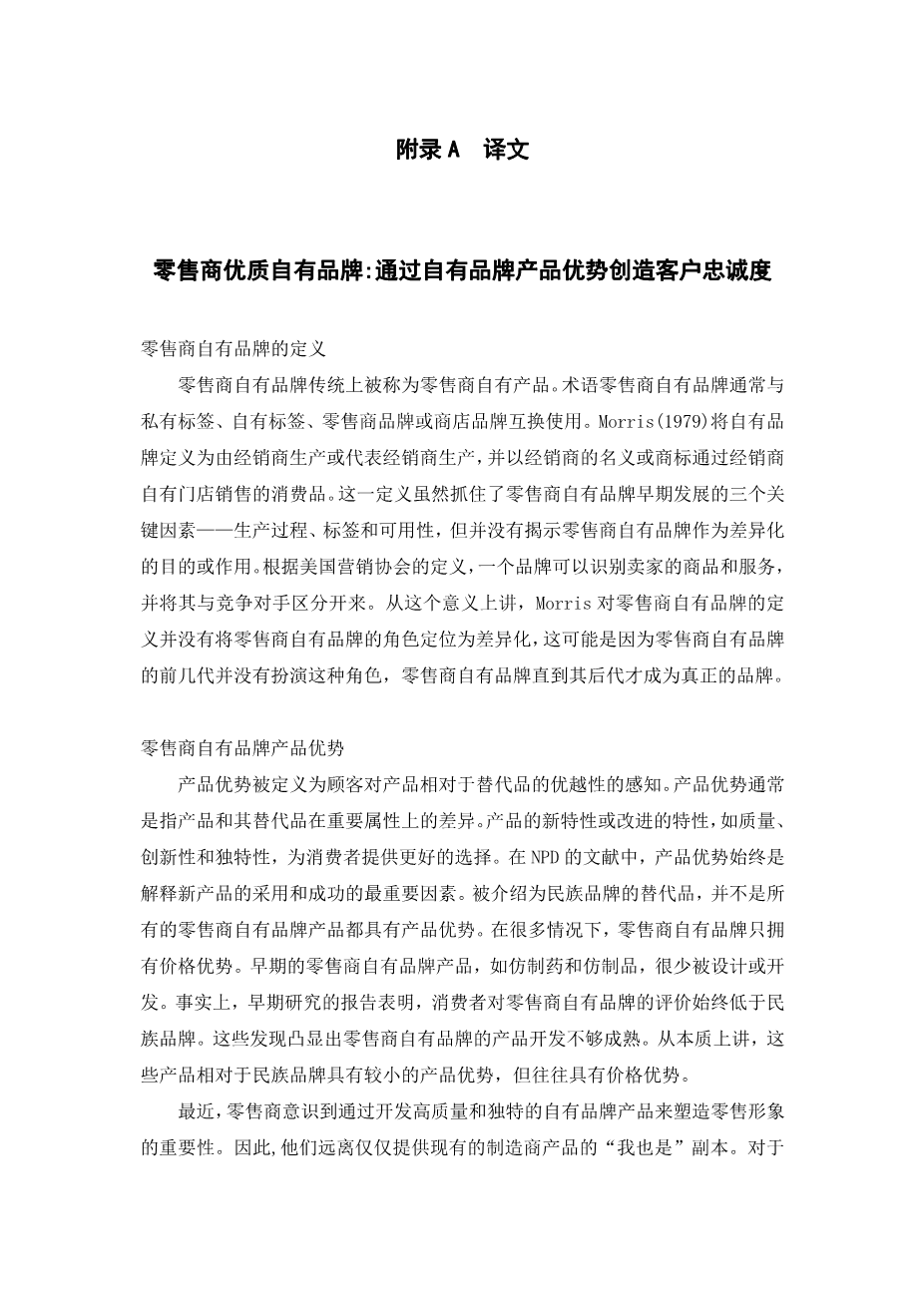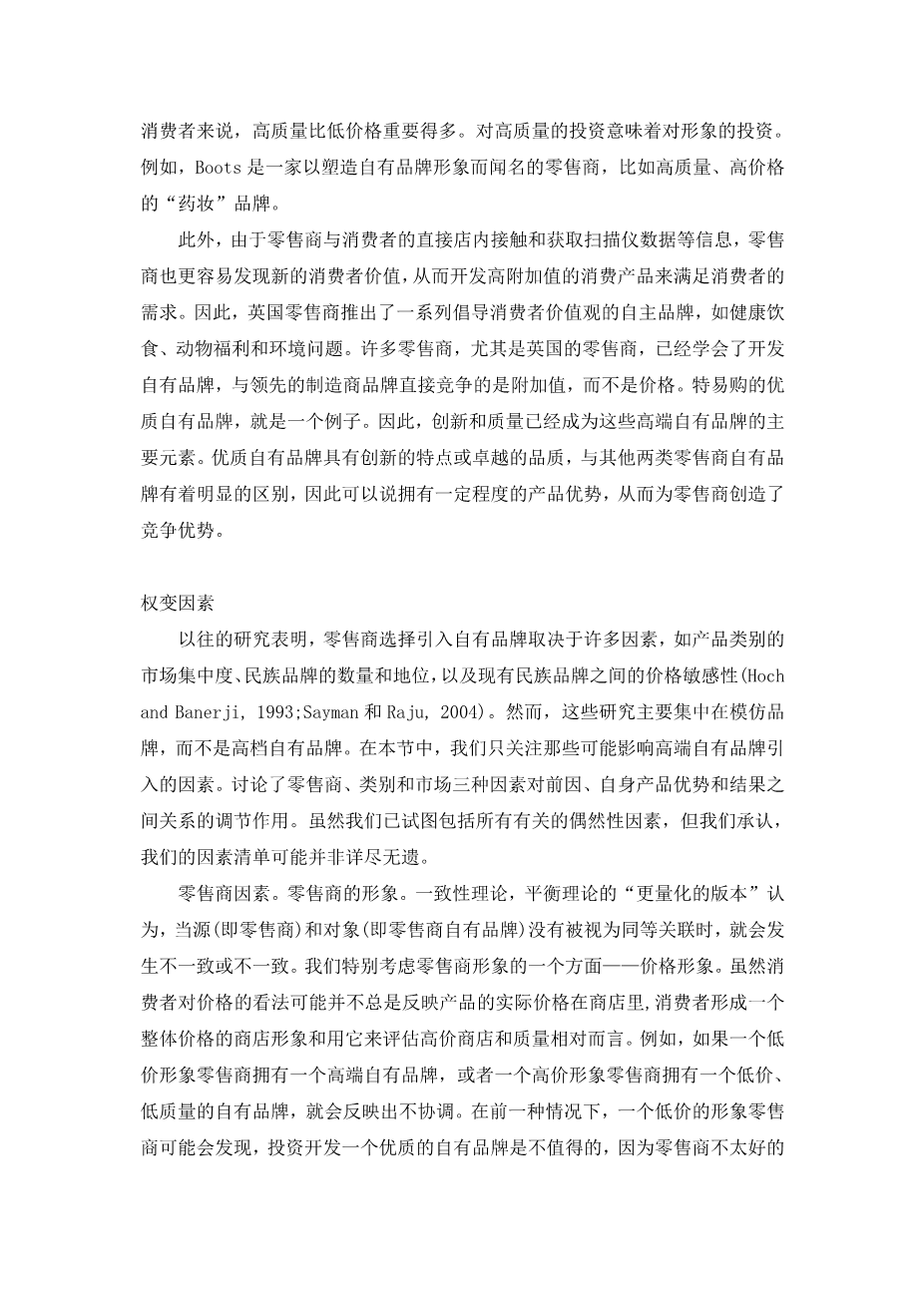Retailer premium own-brands: creating customer loyalty through own-brand products advantage
Definition of retailer own-brands
Retailer own-brands are traditionally referred to as retailers’ own products and the term retailer own-brands is often used interchangeably with private labels, own-labels, retailer brands, or store brands. Morris (1979) defines own-brands as consumer products produced by or on behalf of distributors and sold under the distributor’s own name or trademark through the distributors’ own outlets. This definition, although it captured three key factors in development of earlier generations of retailer own-brands–process of production, labeling, and availability (Burt, 2000), it did not reveal much about the purpose or the role of retailer own-brands as differentiation. According to the American Marketing Association’s (AMAs) definition, a brand identifies the goods and services of a seller and differentiates them from those of competitors. In this sense, Morris’s definition of a retailer own-brand did not capture the role of own-brands as differentiation, probably because the earlier generations of retailer own-brands did not serve this role a retailer own-brand did not serve as a true brand until its later generations (Burt, 2000)
Retailer own-brand product advantage
Product advantage is defined as the customer’s perception of product superiority with respect to alternatives (Montoya-Weiss and Calantone, 1994). Product superiority usually refers to differences between alternatives on important attributes (Day and Wensley, 1988). New or improved attributes of a product, such as quality, innovativeness, and unique features, provide consumers with better choices. In the NPD literature, product advantage consistently appears as the most important factor in explaining the adoption and success of new products (Montoya-Weiss and Calantone,1994). Introduced as alternatives to national brands, not all retailer own-brand products possess product advantage. In many cases, retailers own-brands possess only a price advantage. Earlier types of retailer own-brand products, such as generics and mimic products, involved little design or development. In fact, the reports from early studies indicate that consumers consistently rate store brands as inferior to national brands (Richardson et al., 1994). These findings highlight a lack of sophistication in product development of retailer own-brands. Essentially, these products possess minimal product advantage relative to national brands, but often had a price advantage.
More recently, retailers have realized the importance of creating a retail image by developing high quality and unique own-brand products. Therefore, they are moving away from merely offering “me too” copies of existing manufacturer products (Burt, 2000; Choi and Coughlan, 2006; Corstjens and Corstjens, 1995). To consumers, high quality is much more important than lower price (Hoch and Banerji, 1993). Investment in high quality means investment in image (Burt, 2000). For example, Boots is a retailer known for creating its image from its own-brands such as high quality, high-price “cosmaceutical” brands (Corstjens and Corstjens, 1995).
Further, due to their direct in-store contact with consumers and access to information such as scanner data, retailers are also in better position to discover new consumer values and therefore develop high value-added consumer product to meet consumer needs (Corstjens and Corstjens, 1995). As a result, UK retailers have launched a series of own-brands advocating consumer values such as healthy eating, animal welfare and environmental concerns (Burt, 2000). Many retailers, particularly in the UK, have learned to develop own-brands that compete directly with leading manufacturer brands on added value, not price. Tesco’s premium own brand, Tesco’s Finest, is one example (Marketing, 2007). Consequently, innovation and quality have become major elements in these premium own-brands (Burt, 2000). With innovative features or superior quality, premium own-brands are clearly distinguished from the other two types of retailer own-brands, and therefore can be said to possess a degree of product advantage that creates a competitive advantage for retailers.
Contingency factors
Previous studies suggest a retailer’s choice to introduce an own-brand depends on many factors, such as market concentration of a product category, number and positions of national brands, and price sensitivities among the existing national brands (Hoch and Banerji, 1993; Sayman and Raju, 2004). However, these studies focus primarily on mimic
brands, not premium own-brands. In this section, we only focus on factors that may affect the introduction of a premium own-brand. Three types of factors (retailer, category,and market) which moderate the relationship between the antecedents, own product advantage and consequences are discussed. While we have attempted to include all relevant contingency factors, we acknowledge that our list of factors may not be exhaustive.
Retailer factors. Retailer image. Congruity theory (Jacoby and Mazursky, 1984,p. 106), a “more quantitative version” of balance theory (Heider, 1944), holds that incongruity or inconsistency occurs when the source (i.e. the retailer) and the object (i.e. the retailer own-brand) are not perceived as equally associated. We particularly consider one aspect of retailer image here – price image. Although consumers’ perceptions of prices may not always reflect the actual prices of products in a store (Corstjens and Corstjens, 1995), consumers do form an overall price image of a store (Desai and Talukdar, 2003) and use it to assess expensiveness of stores and quality in relative terms (e.g. Neiman Marcus . Macy’s . Dollar General). For example, incongruity would be reflected if a low-price image retailer carried a premium own brand, or a high-price imag
剩余内容已隐藏,支付完成后下载完整资料


英语译文共 4 页,剩余内容已隐藏,支付完成后下载完整资料
资料编号:[437654],资料为PDF文档或Word文档,PDF文档可免费转换为Word


